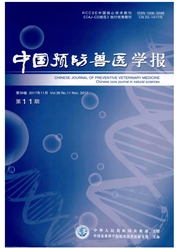

 中文摘要:
中文摘要:
动物疫病风险评估是疫情防控的一个重要环节。本研究利用本实验室所建立的风险评估框架,对中国大陆2369个县/市2006年1月至12月份高高致病性禽流感(HPAI)发生风险进行了定量评估,并利用疫情数据对评估结果进行了验证。结果显示在3月、4月、10月和11月高风险地区数量多、分布广,在华中、华北、西北和东北均有分布;1月、2月、5月、9月和12月HPAI高风险地区的数量相对较少,1月、2月和12月份主要分布在华南,5月和9月主要分布在华北和东北;6月、7月和8月HPAI高风险地区数量最少,而且分布集中,主要分布在青藏高原地区。通过对2006年疫情与评估结果的相关性分析发现,发生疫情的县/市当月的风险评估结果相对较高。本研究结果表明,HPAI定量风险评估方法对HPAI在大范围内发生风险进行定量评估具有可行性,该方法通过进一步优化可望应用于中国HPAI防控决策方面的研究。
 英文摘要:
英文摘要:
Risk assessment is very important for animal disease control and prevention. A quantitative risk assessment framework was established in this study to assess the risks of HPAI outbreak in 2369 counties and cities in mainland China and tested again data of HPAI outbreak in 2006. The results showed that the high risk areas were scattered in northeast, northwest, northem and central China in March, April, October and November. However relatively fewer high risk areas were predicted in southern and southwest China in January, February and December, and in northern China in May and September. The high risk areas in June, July and August were mainly localised in Tibet Plateau. These results were consistent with the outbreak data in 2006. Therefore the improved HPAI risk assessment method could be used to perform quantitative risk assessment of HPAI outbreak on the national level.
 同期刊论文项目
同期刊论文项目
 同项目期刊论文
同项目期刊论文
 期刊信息
期刊信息
